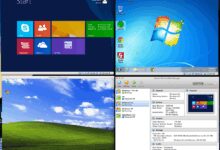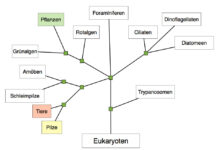System Maintenance: 7 Powerful Strategies for Peak Performance
System maintenance isn’t just a tech chore—it’s the backbone of smooth, secure, and efficient operations. Whether you’re managing a small business server or a sprawling enterprise network, regular upkeep prevents disasters and boosts productivity. Let’s dive into the essential strategies that keep systems running flawlessly.
What Is System Maintenance and Why It Matters

At its core, system maintenance refers to the routine tasks performed to ensure that computer systems, networks, and software operate efficiently and securely. This includes everything from updating software to monitoring hardware health. Without it, systems degrade, vulnerabilities grow, and downtime becomes inevitable.
Defining System Maintenance in Modern IT
In today’s digital-first world, system maintenance goes beyond fixing broken components. It’s a proactive discipline involving scheduled checks, performance tuning, security patching, and data integrity verification. Organizations rely on it to maintain compliance, ensure uptime, and protect sensitive information.
- Prevents system crashes and data loss
- Extends the lifespan of hardware and software
- Supports regulatory compliance (e.g., GDPR, HIPAA)
The Cost of Neglecting System Maintenance
Ignoring system maintenance can lead to catastrophic failures. A 2023 study by Gartner found that unplanned downtime costs enterprises an average of $5,600 per minute. Beyond financial loss, poor maintenance damages customer trust and brand reputation.
“Failing to plan for system maintenance is planning to fail.” — IT Infrastructure Expert, Jane Lin
Types of System Maintenance: Reactive vs. Proactive
Understanding the different types of system maintenance helps organizations choose the right strategy. Broadly, maintenance falls into two categories: reactive (fixing issues after they occur) and proactive (preventing issues before they happen).
Corrective Maintenance: Fixing What’s Broken
Corrective maintenance, also known as reactive maintenance, involves addressing problems after a system failure. While unavoidable at times, relying solely on this approach is risky and costly.
- Triggered by system crashes, errors, or alerts
- Often requires emergency response teams
- Can lead to extended downtime
For example, if a database server suddenly fails due to a corrupted file, corrective maintenance would involve restoring from backup and repairing the file system. Learn more about incident response at CISA’s Incident Response Guidelines.
Preventive Maintenance: Staying Ahead of Problems
Preventive maintenance is scheduled upkeep designed to prevent failures. This includes regular software updates, disk cleanups, and hardware inspections.
- Performed on a fixed schedule (daily, weekly, monthly)
- Reduces the likelihood of unexpected outages
- Improves system reliability and performance
For instance, running a monthly disk defragmentation on Windows servers can significantly improve I/O performance over time.
Essential System Maintenance Tasks Every Organization Should Perform
Effective system maintenance isn’t random—it follows a structured checklist. These core tasks form the foundation of any robust maintenance plan.
Software Updates and Patch Management
One of the most critical aspects of system maintenance is keeping software up to date. Cybercriminals often exploit known vulnerabilities in outdated software.
- Operating systems (Windows, Linux, macOS)
- Applications (browsers, office suites, CRM tools)
- Security patches released by vendors
Automated patch management tools like Windows Server Update Services (WSUS) help streamline this process across large networks.
Hardware Diagnostics and Monitoring
Even the best software can’t compensate for failing hardware. Regular diagnostics detect early signs of disk failure, overheating, or memory leaks.
- SMART (Self-Monitoring, Analysis, and Reporting Technology) for hard drives
- Temperature and fan speed monitoring
- RAM stress testing
Tools like HWMonitor or Nagios provide real-time insights into hardware health, enabling preemptive replacements before catastrophic failure.
Data Backup and Recovery Testing
No system maintenance plan is complete without a solid backup strategy. But backing up isn’t enough—you must test recovery procedures regularly.
- Full, incremental, and differential backups
- Offsite and cloud storage options
- Recovery Time Objective (RTO) and Recovery Point Objective (RPO) planning
According to Veeam’s 2024 Data Protection Report, 68% of companies experienced data loss in the past year—yet only 42% tested their backups monthly. Regular testing ensures you can actually restore when disaster strikes.
Best Practices for Effective System Maintenance
Following industry best practices ensures your system maintenance efforts are efficient, scalable, and sustainable.
Create a Comprehensive Maintenance Schedule
A well-structured schedule prevents tasks from being overlooked. Use a calendar system to assign responsibilities and track completion.
- Daily: Log reviews, uptime checks
- Weekly: Security scans, patch deployment
- Monthly: Full backups, hardware audits
- Quarterly: Performance tuning, policy reviews
Tools like Jira Service Management can help automate ticketing and reminders for recurring tasks.
Document Everything: The Power of Maintenance Logs
Documentation is crucial for accountability, troubleshooting, and onboarding new team members. Every change, update, or repair should be logged.
- Who performed the task
- What was done
- When it occurred
- Why it was necessary
These logs become invaluable during audits or post-incident reviews. They also help identify recurring issues that may point to deeper systemic problems.
Leverage Automation Tools
Manual maintenance is time-consuming and error-prone. Automation tools reduce human error and free up IT staff for higher-value work.
- Scripted backups using PowerShell or Bash
- Automated patch deployment via SCCM or Ansible
- Monitoring alerts through Zabbix or Datadog
For example, Ansible playbooks can automatically apply security configurations across hundreds of servers, ensuring consistency and compliance.
System Maintenance in Different Environments
The approach to system maintenance varies depending on the environment—on-premise, cloud, hybrid, or embedded systems.
On-Premise Infrastructure Maintenance
Traditional data centers require hands-on maintenance. Physical access to servers, networking gear, and cooling systems is essential.
- Regular cleaning of server racks to prevent dust buildup
- UPS (Uninterruptible Power Supply) battery testing
- Firmware updates for routers and switches
Organizations like hospitals and banks often maintain on-premise systems for security and control, making rigorous maintenance non-negotiable.
Cloud-Based System Maintenance
In cloud environments, maintenance responsibilities are shared between the provider and the user (the “Shared Responsibility Model”).
- Cloud providers (AWS, Azure, Google Cloud) handle physical infrastructure
- Users are responsible for OS updates, configurations, and data security
- Regular review of IAM (Identity and Access Management) policies
For example, while AWS manages the physical servers, you must patch your EC2 instances and secure S3 buckets. Learn more at AWS Shared Responsibility Model.
Hybrid and Edge Computing Maintenance
Hybrid systems combine on-premise and cloud resources, requiring a unified maintenance strategy. Edge computing adds complexity with distributed devices.
- Synchronize patch cycles across environments
- Monitor latency and bandwidth usage
- Secure remote IoT devices with zero-trust principles
Manufacturing plants using edge AI for quality control must ensure firmware updates are pushed securely to thousands of sensors without disrupting production.
Security and Compliance in System Maintenance
Maintenance isn’t just about performance—it’s a critical component of cybersecurity and regulatory compliance.
Patching Vulnerabilities to Prevent Cyberattacks
Unpatched systems are low-hanging fruit for hackers. The 2021 Colonial Pipeline ransomware attack exploited an unpatched VPN server.
- Prioritize critical patches (CVSS score 9-10)
- Test patches in staging environments before deployment
- Use vulnerability scanners like Nessus or OpenVAS
Regular patching reduces the attack surface and demonstrates due diligence in security practices.
Audit Logs and Regulatory Compliance
Industries like healthcare and finance must comply with strict regulations (HIPAA, PCI-DSS, SOX). System maintenance logs serve as audit trails.
- Track user access and configuration changes
- Retain logs for minimum required periods (e.g., 6 months to 7 years)
- Enable SIEM (Security Information and Event Management) tools
Tools like Splunk or Microsoft Sentinel aggregate logs for real-time analysis and compliance reporting.
Role of System Maintenance in Disaster Recovery
A robust disaster recovery (DR) plan depends on consistent system maintenance. Outdated backups or untested failover systems render DR useless.
- Conduct quarterly DR drills
- Maintain redundant systems in geographically separate locations
- Update DR plans after major system changes
For example, a financial institution must ensure its DR site mirrors production data within 15 minutes (RPO) and can go live within 30 minutes (RTO).
Measuring the Success of System Maintenance
How do you know if your maintenance efforts are paying off? Use key performance indicators (KPIs) to measure effectiveness.
Uptime and Downtime Metrics
System availability is a primary indicator of maintenance success. Aim for 99.9% uptime (less than 8.76 hours of downtime per year).
- Track MTBF (Mean Time Between Failures)
- Monitor MTTR (Mean Time To Repair)
- Use uptime monitors like UptimeRobot or Pingdom
Consistently high uptime reflects effective preventive maintenance and rapid incident response.
User Satisfaction and Performance Benchmarks
End-user experience matters. Slow systems frustrate employees and customers alike.
- Measure application load times
- Survey user satisfaction quarterly
- Compare current performance to baseline metrics
For example, if a CRM system takes over 10 seconds to load records, it may indicate database bloat or insufficient indexing—issues maintenance can resolve.
Cost-Benefit Analysis of Maintenance Programs
Maintenance has costs (labor, tools, downtime), but the ROI is substantial. Compare maintenance spending to cost of downtime.
- Calculate annual maintenance cost per server
- Estimate potential losses from unplanned outages
- Use ROI formulas to justify budget requests
A 2022 IBM study found that organizations with strong maintenance programs saved an average of 40% on IT incident costs compared to those without.
Future Trends in System Maintenance
Technology is evolving, and so is system maintenance. Emerging trends are reshaping how we maintain digital infrastructure.
AI-Powered Predictive Maintenance
Artificial intelligence is revolutionizing maintenance by predicting failures before they happen.
- Machine learning models analyze log patterns for anomalies
- Predict disk failure based on SMART data trends
- Automatically trigger alerts or remediation scripts
Google’s DeepMind has already used AI to reduce data center cooling costs by 40%—a similar approach can optimize maintenance scheduling.
Self-Healing Systems and Autonomous Operations
The future of system maintenance may involve systems that fix themselves. Self-healing networks can reroute traffic during outages or restart failed services automatically.
- Kubernetes auto-healing pods
- Autonomous database tuning (e.g., Oracle Autonomous Database)
- Zero-touch provisioning for new devices
These technologies reduce human intervention and increase resilience, especially in large-scale environments.
Green IT and Sustainable Maintenance
As environmental concerns grow, sustainable maintenance practices are gaining traction.
- Extending hardware lifecycle through proper care
- Using energy-efficient cooling and power management
- Recycling old components responsibly
Companies like Apple and Dell now offer take-back programs for old hardware, aligning maintenance with corporate sustainability goals.
What is the most important aspect of system maintenance?
The most important aspect is consistency. Regular, scheduled maintenance prevents small issues from becoming major failures. Prioritizing tasks like software updates, backups, and security patches ensures long-term system health and security.
How often should system maintenance be performed?
Frequency depends on the environment, but a general guideline is: daily log checks, weekly security scans, monthly backups and updates, and quarterly hardware audits. Critical systems may require more frequent attention.
Can system maintenance be fully automated?
While many tasks can be automated—like patching, backups, and monitoring—human oversight remains essential. Automation reduces errors, but strategic decisions, audits, and complex troubleshooting still require skilled IT professionals.
What tools are essential for effective system maintenance?
Essential tools include patch management systems (e.g., WSUS), monitoring platforms (e.g., Nagios, Zabbix), backup solutions (e.g., Veeam, Acronis), and documentation tools (e.g., Confluence, Jira). The right toolkit depends on your infrastructure size and complexity.
How does system maintenance improve security?
Regular maintenance closes security gaps by applying patches, removing outdated software, and enforcing configuration standards. It also ensures that backup and recovery systems work when needed, minimizing damage from cyberattacks.
System maintenance is far more than a technical checklist—it’s a strategic imperative. From preventing costly downtime to ensuring regulatory compliance and enhancing security, a well-executed maintenance plan delivers tangible benefits across the organization. By embracing best practices, leveraging automation, and staying ahead of emerging trends like AI-driven maintenance, businesses can ensure their systems remain resilient, efficient, and future-ready. The key is consistency, documentation, and a proactive mindset. In the world of IT, the best crisis is the one that never happens.
Further Reading:









